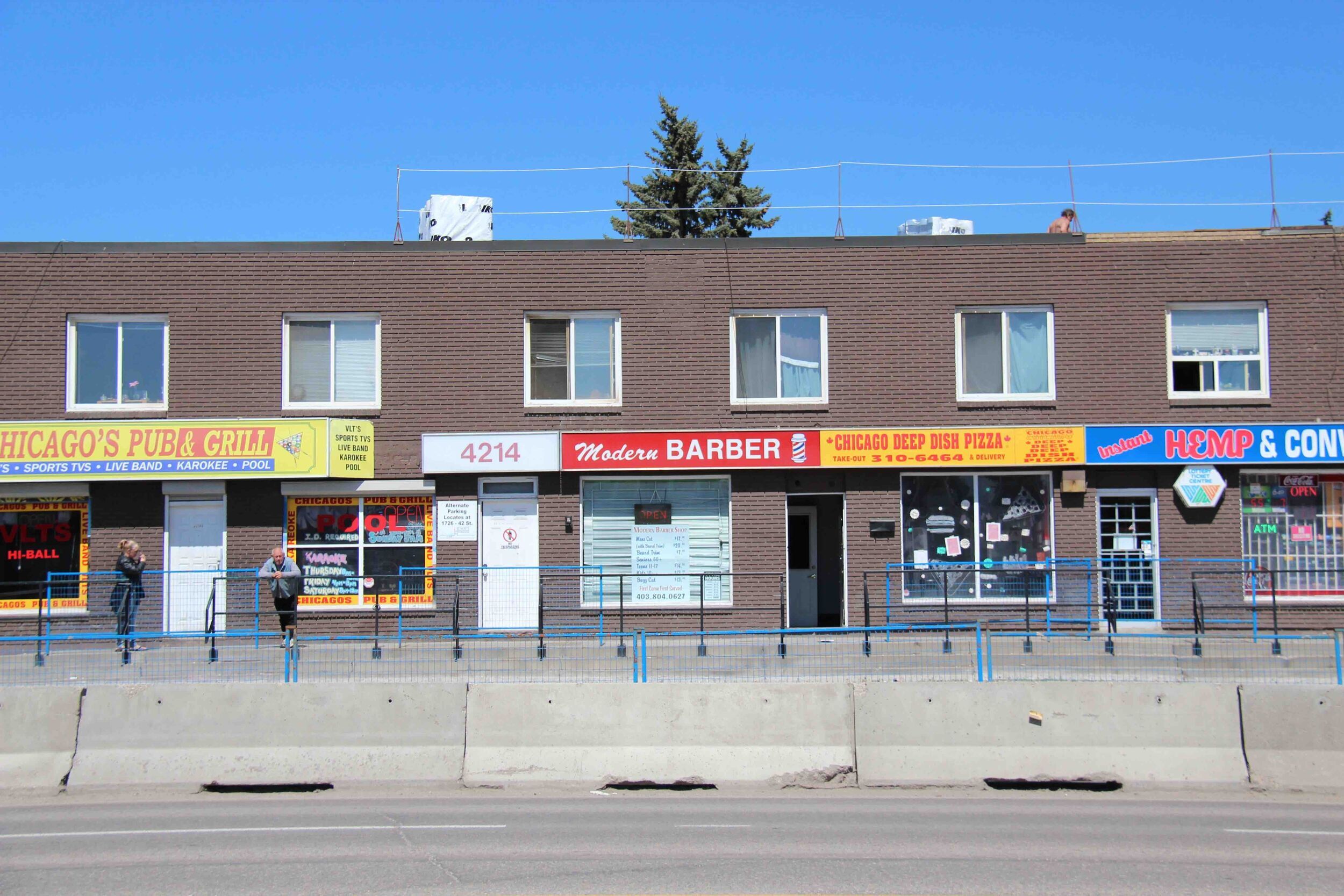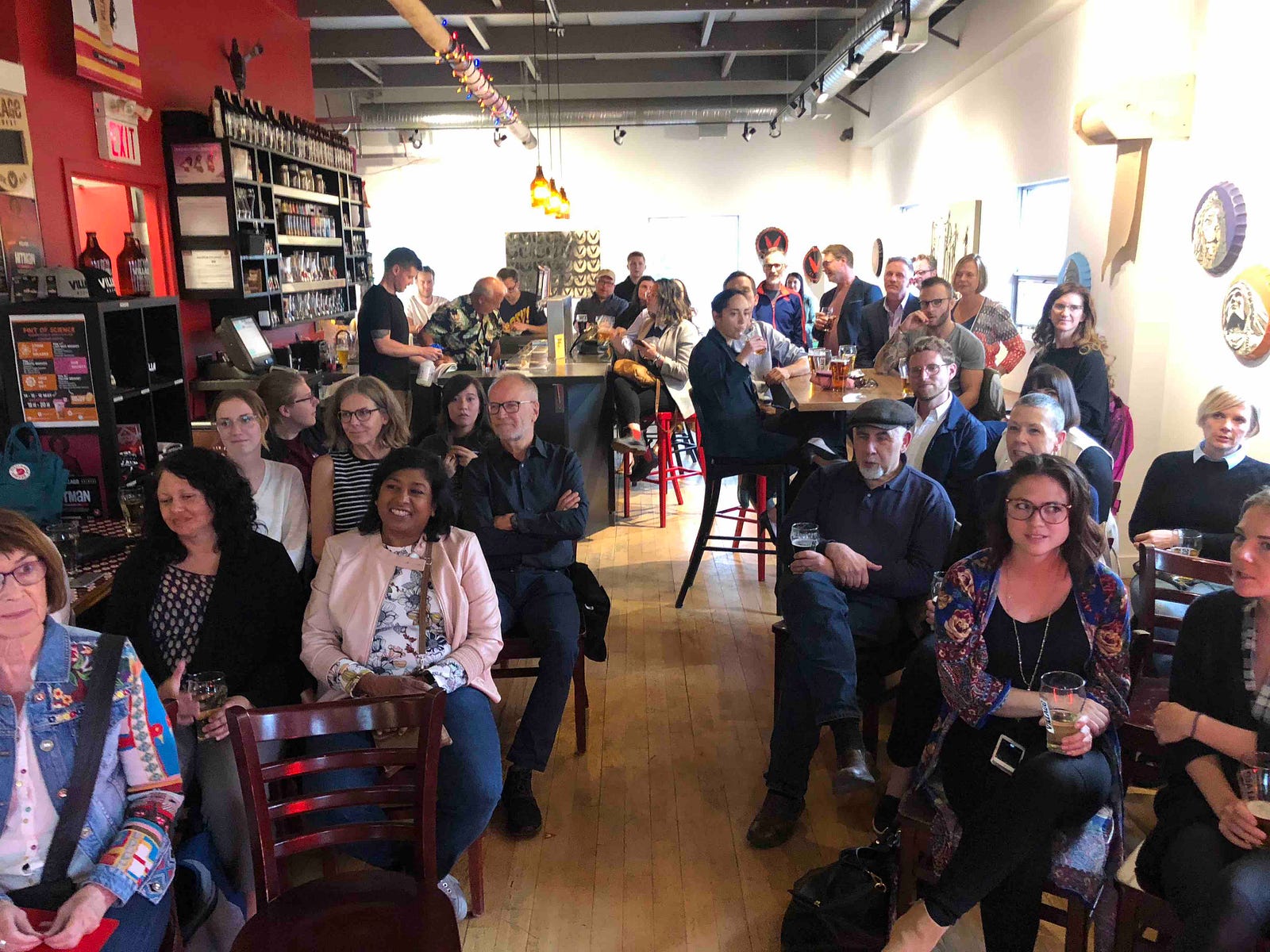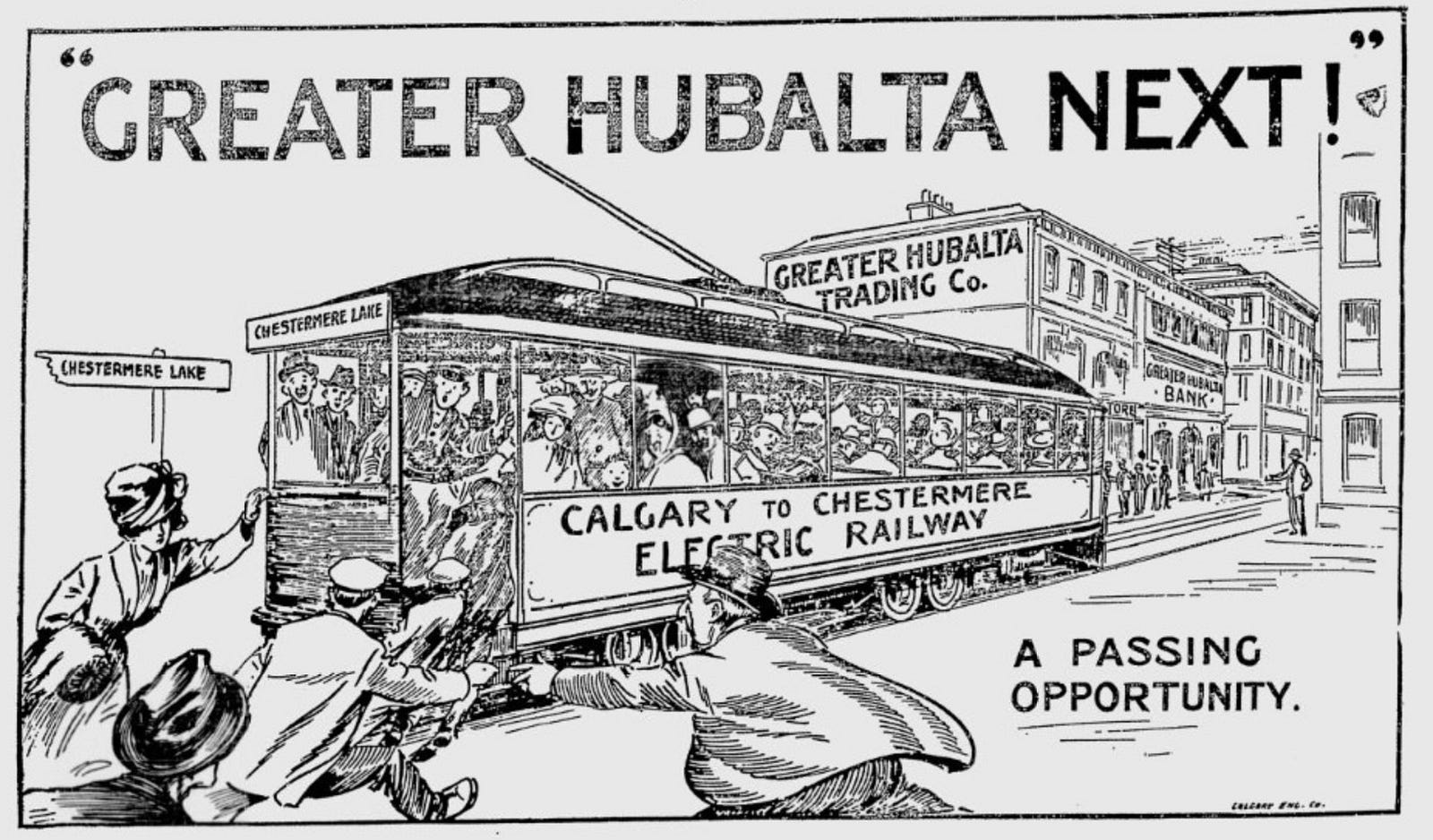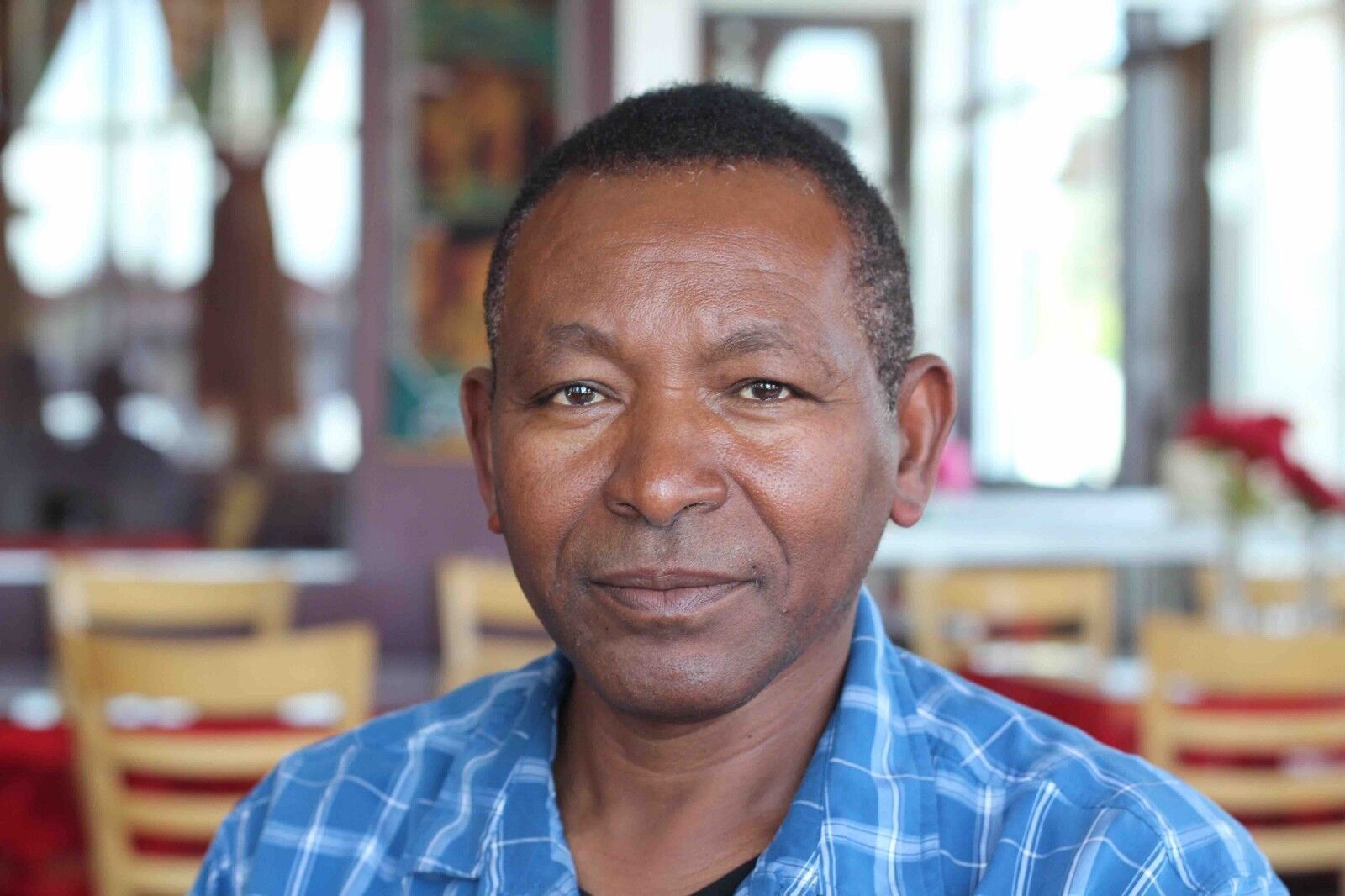
The 17th Ave edition is done. Here are 4 things we learned
It’s almost never as simple as for/against
The Sprawl’s 17th Avenue edition is now finished.
It’s been a big week! On Monday, we put out Ep 4 of Sprawlcast, The Streetcar That Wasn’t. Tuesday, the Sprawl won a national Digital Publishing Award for our election edition last fall.

On Wednesday, we participated in a lively conversation about journalism’s future with a packed room of Calgarians, including Jason Markusoff of Maclean’s, Jaelyn Molyneux of Avenue and Mike Bell of TheYYSCENE.
And on Thursday, we hit a huge milestone: the Sprawl now has 400+ monthly supporters! Wow. Thank you Calgary!! (If you haven’t yet, sign up here—there’s room for you aboard “good ship Sprawl,” as one supporter recently called it.)
We’ve been trying to find the right mix between the Sprawlcast and written stories, and in this edition we managed to strike a pretty good balance (we think—it’s something we’re figuring out as we go). This was the first time we incorporated the Sprawlcast into an edition—even doing two full episodes in May, rejigging our monthly schedule—and the response was overwhelmingly positive.
In response to feedback from our audience, we also published full transcripts of each episode for the first time. And we created a Sprawl Soapbox for reader contributions.
Here’s what I learned (and re-learned!) while working on the 17th Ave edition.
1. If it sounds too good to be true, it probably is.

Earlier this week I tweeted about how I found an oft-repeated story about Forest Lawn’s origins in old newspaper articles. But I had a weird feeling about it, and eventually discovered, in the middle of the night, that the story was a tall tale. As a result I had to re-record parts of the Sprawlcast at the last minute (click on the upper right-hand corner of the tweet to read the full thread).
For me it was a lesson in, among other things, being careful about research. As I wrote on Twitter, if you’ve got a nagging feeling that the story you have doesn’t add up, you’re probably right.
2. Individuals don’t speak for an entire community.
After the podcast came out, I got an email from a listener and supporter, Bronwyn Bragg. She has kindly allowed me to publish it here:
Dear Jeremy,
First let me congratulate you on (another) fabulous piece of local journalism. The archival detail and history of the neighbourhood is a valuable addition to Calgary’s conversations about urban development. I also think you did a great job tracing the history of an area that has been traditionally underserved by good transit, despite the needs and character of the neighbourhood.
That being said, I wanted to provide a bit of constructive feedback about the piece. I am currently working on my dissertation research in urban geography and have spent the last 1.5 years conducting research in Forest Lawn. My focus in primarily on the Syrian refugees who are living in the area (there is a “little Syria” just north of 17th Ave SE at around 44th Street) but I have also been spending time with a lot of social service and community organizations that work in the area, as well as with longtime residents in the community.
While your piece rightly points to the generally positive feelings the community has toward the redevelopment and the new BRT, in drawing so heavily from the perspective of the BRZ, I think your story missed a critical angle — namely that of residents in the area. A major concern on the part of residents and service organizations is how this largely BRZ-led redevelopment will impact those who live in the community.
While greater transit accessibility and walkability are both good things, the goals of the BRZ—to beautify and, let’s be honest, gentrify the neighbourhood—pose concerns for those who live and access much needed services in the community. The BRZ represents the interests of businesses along 17th Avenue SE. These interests are not necessarily aligned with those of residents, especially in a community as complex and multifaceted as Forest Lawn.
While I understand the goals of your story were to discuss the history of transit accessibility and inclusion/exclusion in the city, the BRZ — through [executive director] Alison Karim-McSwiney — comes to speak for the entire community, which is problematic because despite her years of laudable work through the BRZ, it is not clear if she is actually a resident of Greater Forest Lawn. [Ed.: She is not, though others in the BRZ office are.]
I hope you take this in the constructive spirit in which it is intended. I am a HUGE fan of The Sprawl (and monthly member) and I really, really value the voice you are bringing to Calgary issues. I also love the podcast form, so please keep up the excellent work.
Thanks,
Bronwyn
When I interviewed Karim-McSwiney and Councillor Gian-Carlo Carra, they did mention the challenge of gentrification (I couldn’t find space to include it in the podcast). To stave off this possibility, the BRZ hopes to create a community development corporation in collaboration with local partners— including Momentum, the community economic development agency.
“You want to reinvest in your neighbourhood to make it nicer and nicer, and then in the blink of an eye you’re on the other side of the teeter-totter,” Carra said. “And you’re wondering: how the hell do we keep this affordable? That’s one of the balancing acts in great neighbourhoods.”
“I think we’re going to shift very quickly in our work from reinvestment [on International Avenue] to enjoying the private investment that accompanies that—but also then focusing very seriously on how the heck do we keep this affordable,” said Carra.
Bronwyn’s criticism about not including resident voices is one that I welcome. I can do a better job of being inclusive in my reporting. This is exactly why I made the Sprawl Manifesto: to publicly set a high bar so that people could hold me to account. Bronwyn’s email brought me back to point nine of the manifesto:
We strive for inclusiveness that goes beyond tokenism.
The Sprawl is not a “voice for the voiceless.” Instead, we recognize that in Calgary, as elsewhere, some voices are heard more than others. We ask: how can we listen to and amplify diverse local voices, building reciprocal relationships instead of extracting quotes?
3. It’s almost never as simple as for/against
Whether we’re talking about a pipeline or urban redevelopment, there can be a tendency to categorize people and organizations into simplistic, polarized categories. Businesses support a cycle track; businesses oppose a cycle track. Residents support redevelopment; residents oppose redevelopment.
In reality, people are more complex than that. On both 17th Avenues, there’s a range of opinions up and down the street on what’s happening—and even individual opinions aren’t as simple as for/against.

Along International Avenue, for example, some are taking a wait-and-see view on the new BRT project. “After it’s complete, I don’t know what happens,” said Moges Aman, who owns Fassil Ethiopian Restaurant. “But last year and this year are very slow because of the traffic jams everywhere [due to construction]. And the economy of Calgary also isn’t good, so it’s very tough.”
Will the new bus line be worth it in the end? “Really I don’t know. I’m crossing my fingers.”
4. The best stories are usually discovered, not planned.
I wanted to do a story about cycling on 17th Avenue SW, so I set up an interview with Ximena González, the founder of a local PR agency. I knew she regularly biked to the street—and likely had strong opinions about cycle infrastructure (or the lack thereof) on 17th Avenue.

That, I thought, would be the story.
But we ended up chatting about what makes 17th Ave work, which seemed far more interesting. This was while Calgarians (including González) were noting that, hey, patios on 17th are kind of nice without the disturbance of traffic and loud motorcycles. Drawing on her knowledge of urban design—along with her experience growing up in Mexico—she had illuminating insights about the street’s draw.
“I actually think what works about 17th is the lack of planning, to an extent. It’s not like, ‘Okay, we’re going to have a street and it’s going to do this.’ It’s more like it organically becomes what it is now — and that gives it a lot of character.”
So I changed the direction of the story, tacking on the bike element at the end.
For me, one of the great joys of journalism is the many moments of epiphany. You think you know what the story is about, and in encountering others, you realize you don’t know jack. This is terribly inconvenient—argh, the story I had in my head won’t work!—but exciting too, because the story you’re discovering out in the world is, in the end, better. It will change you if you let it.
And you’re always learning something new.
Jeremy Klaszus is editor-in-chief of The Sprawl.
Clarification 06/04/18: The initial version of this story did not include the BRZ’s response to gentrification. We updated the story to include this information—and to clarify that, while Karim-McSwiney does not live in Greater Forest Lawn, others in her office do.
Please become a monthly supporter of the Sprawl so we can keep doing in-depth local journalism. Sign up today!
Support in-depth Calgary journalism.
Sign Me Up!We connect Calgarians with their city through in-depth, curiosity-driven journalism—but can't do this alone! We rely on our readers and listeners to fund our work. Join us by becoming a Sprawl member today!
